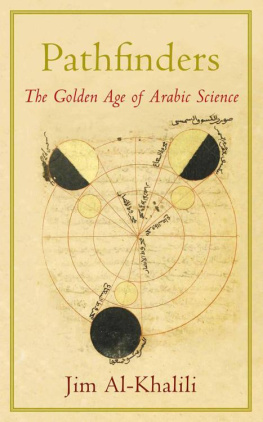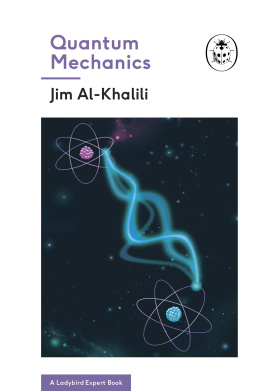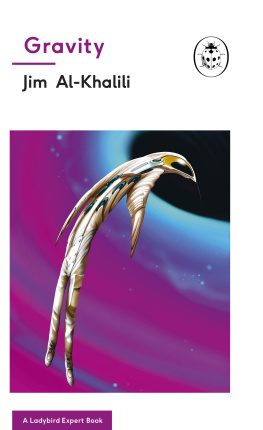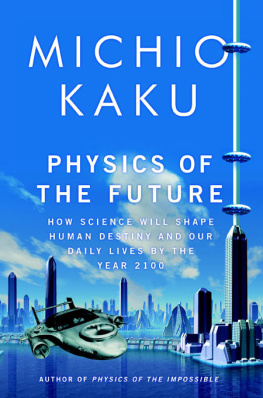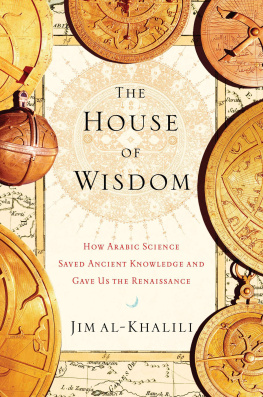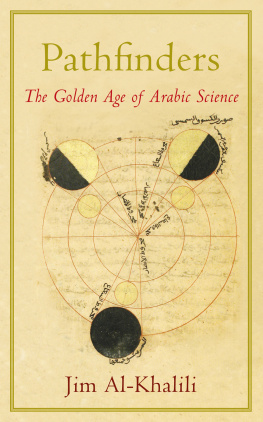WHATS NEXT?
Jim Al-Khalili OBE is an Iraqi-born British theoretical physicist, author and broadcaster. He is currently Professor of Theoretical Physics and Chair in the Public Engagement in Science at the University of Surrey. He has hosted several BBC productions about science, including BBC Radio 4's The Life Scientific.
WHATS
NEXT?
WHAT SCIENCE CAN TELL US ABOUT OUR
FASCINATING FUTURE
Edited by Jim Al-Khalili

First published in Great Britain in 2017 by
Profile Books Ltd
3 Holford Yard
Bevin Way
London WC 1 X 9 HD
www.profilebooks.com
Selection, (Teleportation and Time Travel)
copyright Jim Al-Khalili 2017
Other chapters copyright of the author in each case Philip Ball, Margaret A. Boden, Naomi Climer, Lewis Dartnell, Jeff Hardy, Winfried K. Hensinger, Adam Kucharski, John Miles, Anna Ploszajski, Aarathi Prasad, Louisa Preston, Adam Rutherford, Noel Sharkey, Julia Slingo, Gaia Vince, Mark Walker, Alan Woodward 2017
The moral right of the authors has been asserted.
All rights reserved. Without limiting the rights under copyright reserved above, no part of this publication may be reproduced, stored or introduced into a retrieval system, or transmitted, in any form or by any means (electronic, mechanical, photocopying, recording or otherwise), without the prior written permission of both the copyright owner and the publisher of this book.
All reasonable efforts have been made to obtain copyright permissions where required. Any omissions and errors of attribution are unintentional and will, if notified in writing to the publisher, be corrected in future printings.
A CIP catalogue record for this book is available from the British Library.
eISBN 978 1 78283 376 5
Contents
THE FUTURE OF OUR PLANET
Demographics, conservation and climate change
THE FUTURE OF US
Medicine, genetics and transhumanism
THE FUTURE ONLINE
AI, quantum computing and the internet
MAKING THE FUTURE
Engineering, transport and energy
THE FAR FUTURE
Time travel, the apocalypse and living in space
Introduction
Jim Al-Khalili
According to Einsteins theory of relativity, the future is out there, waiting for us all times, past, present and future, preexisting and permanent in a static four-dimensional spacetime. And yet our consciousness is stuck in an ever-changing now, crawling along the time axis, welcoming the future as we gobble it up, then leaving it in our wake as it transforms into the past. But we are never able to see what is ahead of us. It is an incontestable fact that we cannot predict the future, despite the claims of psychics and fortune-tellers.
On a metaphysical level, whether our future is predestined or open, whether our fate is sealed in a deterministic universe or whether we have the freedom to shape it as we wish, is still a matter of debate among scientists and philosophers. Sometimes, of course, we can be reasonably confident what will happen indeed some future events are inevitable: the sun will continue to shine (for another few billion years anyway), the Earth will continue to spin on its axis, we will all grow older, and the team I follow, Leeds United, will always leave me disappointed at the end of every football season.
In other ways, the future can unfold in completely unexpected ways. Human culture is so rich and varied that very often events happen in ways no one could have predicted. So, while there will have been a few who foretold Donald Trumps US election victory in 2016, no one can (thus far) predict when and where the next big natural disaster maybe an earthquake or a flood might strike.
Predictions about the way in which our lives will change thanks to advances in science and technology are spread across that wide expanse between the inevitable and the utterly unforeseen. The most reliable, and imaginative, soothsayers when it comes to conjuring up the future are usually science fiction writers, but how many of them before 1990 described a world in which the internet would connect all our lives in the way it does today? The World Wide Web still sounds fantastical when you stop to think about it.
So how does one compile a book, in the second decade of the twenty-first century, on what scientific advances are awaiting us, whether they are just around the corner, five years or ten years from now, or they are further off in the future, way beyond our lifetimes?
Some of the essays in this book serve as dire warnings about the way our world will be shaped, whether by nature or human activity, if we dont do something now. Solutions to our global problems will require financial, geopolitical and cultural elements as well as scientific and engineering ones, but it is clear that harnessing our knowledge of the natural world, as well as the use of innovation and creativity in the technologies that exploit any new science, is going to be more vital than ever in the coming decades. So these essays are also beacons of hope, because they show how science can mitigate worst-case scenarios, like the damaging effects of climate change, overpopulation or the spread of pandemics through microbial resistance.
It is also undeniably true that the implementation of new technologies, whether in AI, robotics, genetics, geoengineering or nanotechnology, to name but a few exciting current areas of rapid advancement, must be carefully considered and debated. We cannot afford to allow ourselves to be propelled headlong into an unknown future without carefully exploring the implications, both ethical and practical, of our discoveries and their applications. Many examples come to mind, such as the way robots are already beginning to replace humans in the workplace, how we can best guard against cyber terrorism, or the way we use up our natural resources while destroying habitats and threatening the ecosystem as the worlds population grows both in size and greed. But I am painting a bleak picture, and our future need not look like that.
It is important to remember that scientific knowledge in itself is neither good nor evil its the way we use it that matters. You can be sure that within a decade or two we will have AI-controlled smart cities, driverless cars, augmented reality, genetically modified food, new and more efficient forms of energy, smart materials, and a myriad of gadgets and appliances all networked and talking to each other. It will be a world almost unrecognisable from todays, just as todays world would appear to someone in the 1970s and 1980s. One thing we can say with certainty is that our lives will continue to be completely transformed by advances in our understanding of how the world works and how we harness it.
Some of the contributions in this book paint a relatively reliable picture of the future. This is because the science they describe is with us in embryonic form already and we can see clearly how it will mature in the years to come. Others offer more than one scenario describing how our future will unfold, not because we dont understand the science or because its application may throw up surprises, but because the path we take depends on how that scientific knowledge is used. These will be decisions we must make collectively as a society and which require responsible politicians as well as a scientifically literate populace.
Inevitably, certain topics, whether driverless cars, genetic engineering or the so-called Internet of Things, are covered by more than one contributor. This is deliberate, since it gives the reader more than one perspective on the different ways all our lives will change in the coming decades. It also highlights that many of these new technologies are interconnected and act to drive each other forward.
Next page

